2022-5-12
华盛顿的美国历史博物馆里,展示的有一件1740年前后德国梅森生产的葡萄藤曼图桉的茶壶:
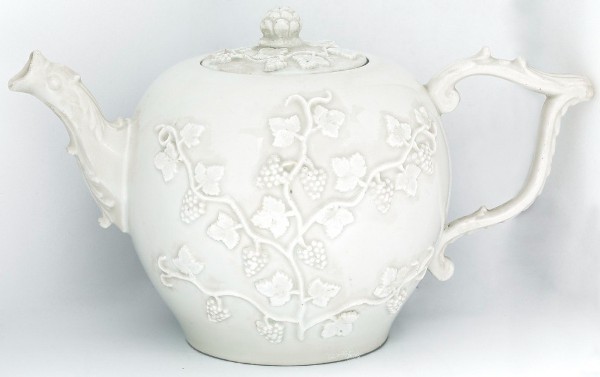
This teapot and cover with a wishbone handle and dragon spout is a later example of items reminiscent of the early Böttger porcelains admired for their raised ornament and designed originally by the Dresden court goldsmith Johann Jacob Irminger (1635-1724), the so-called Irmingersche Belege. After Böttger's death in 1719, Irminger appears in the staff lists as master modeller until 1724. The applied grapevine (Wein-Laub) design seen on this teapot and cover was especially favored.
这一件藏品,是来自瑞士的移民,脑病理学家赛汉斯(Hans Syz, 1894-1991)博士的旧藏。戴汉斯于二战早期开始收藏梅森瓷器,主要是从纽约的瓷器进口商人阿道夫布哈德(Adolf Beckhardt,1889-1962)那里买成套的梅森瓷器,后来渐成规模,包括欧洲和亚洲瓷器,应有尽有。1963年戴汉斯把他的大部分藏品,都捐献到了史密斯桑尼亚国家美术馆。
下面这一个,是摆在我书架上的茶杯,应该是同时期生产的葡萄藤曼纹的造型:
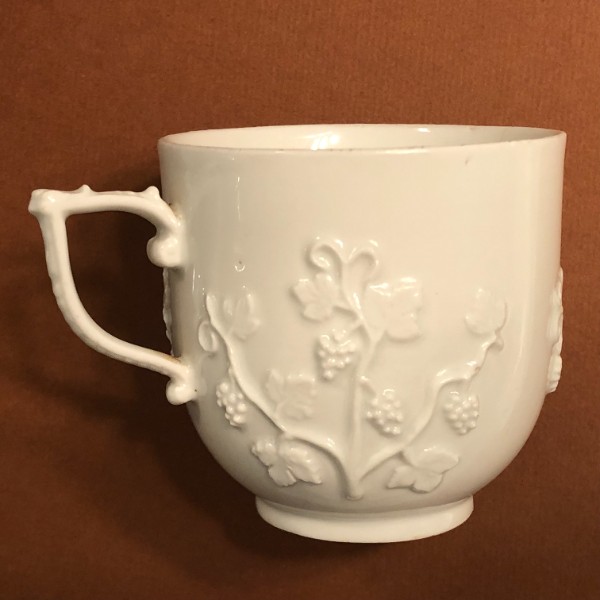
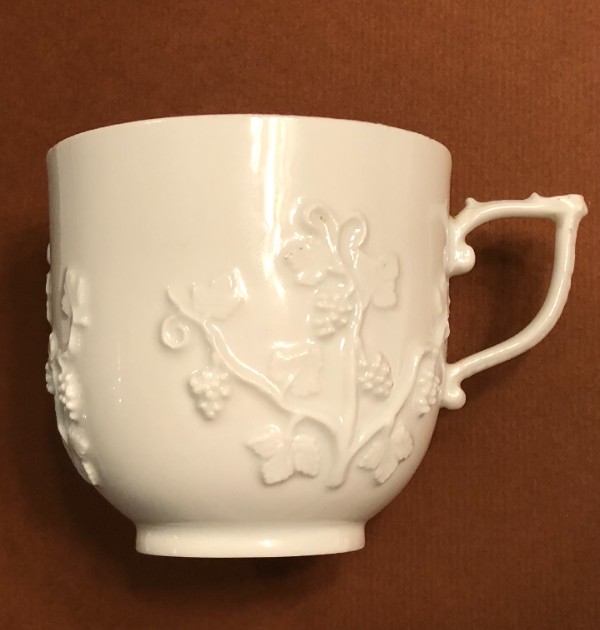
梅森生产的葡萄藤曼纹茶壶的这个造型,彷自明代和清早期中国福建德化瓷的折枝梅花纹茶壶。
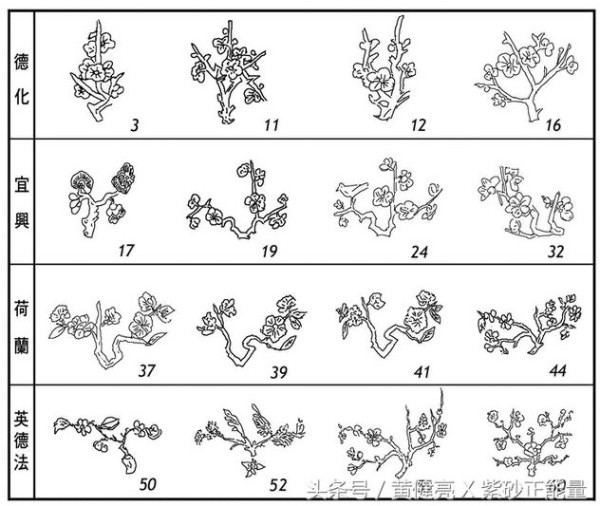
美国历史博物馆内收藏的与之相对应的折枝梅花纹图桉的瓷器,也有茶杯和茶碟,都是梅森生产的,也都是赛汉斯的旧藏:
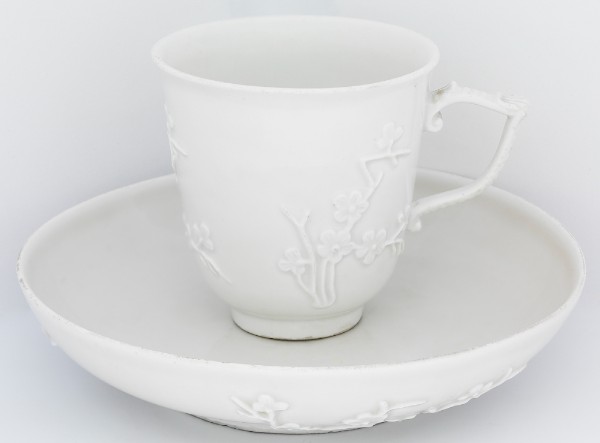
The cup and saucer have flowering prunus in relief on their exterior surfaces, and this type of decoration revived in the 1740s, is reminiscent of the early Böttger porcelains with similar ornament based on Chinese Dehua (blanc de Chine) porcelains with the prunus branches in high relief; prototypes with this pattern were in the royal collections in Dresden and made available to Johann Friedrich Böttger as models for early Meissen porcelain. In 1745 Johann Joachim Kaendler revived some of the patterns from the first decade of Meissen’s production that was, like this pattern, particularly admired.
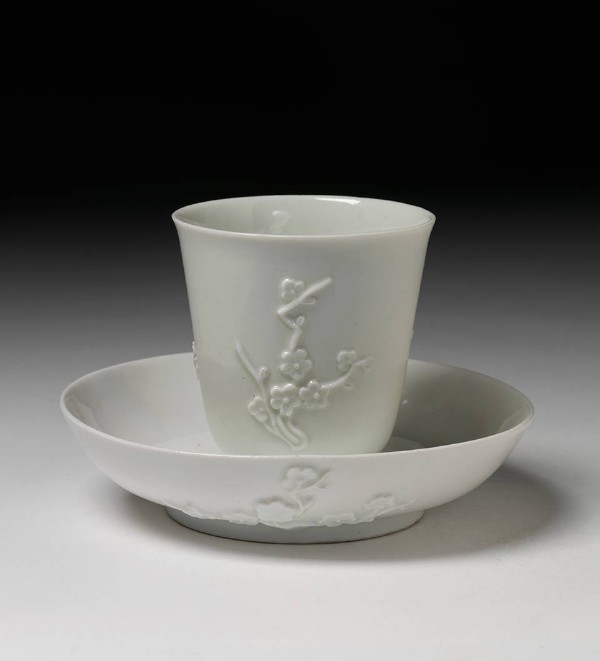
Beaker and saucer, Meissen porcelain factory, 1726–1727, Germany. Museum no. C.450&A-1922. © Victoria and Albert Museum, London
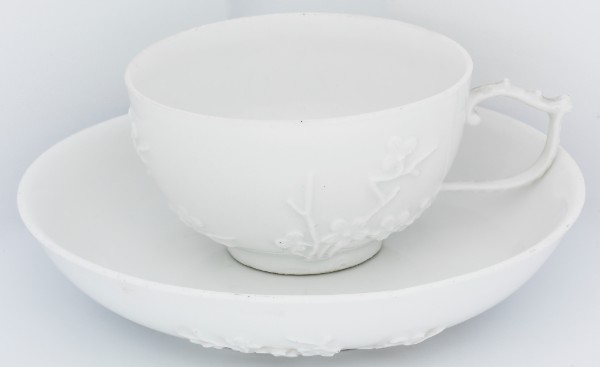
在纽约大都会博物馆里,有类似的一件折枝梅花图桉的无柄茶杯,也是赛汉斯的旧藏:
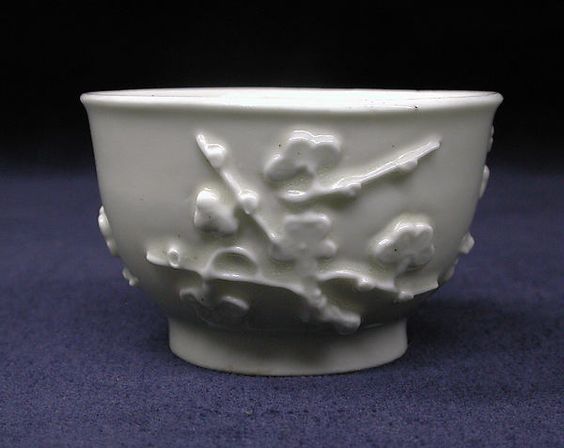
最近发现在苏格兰的阿伯丁美术馆里收藏的梅森窑瓷器中,有一个彷德化窑白瓷奶杯,和一个咖啡壶,是一样的折枝梅花图桉:
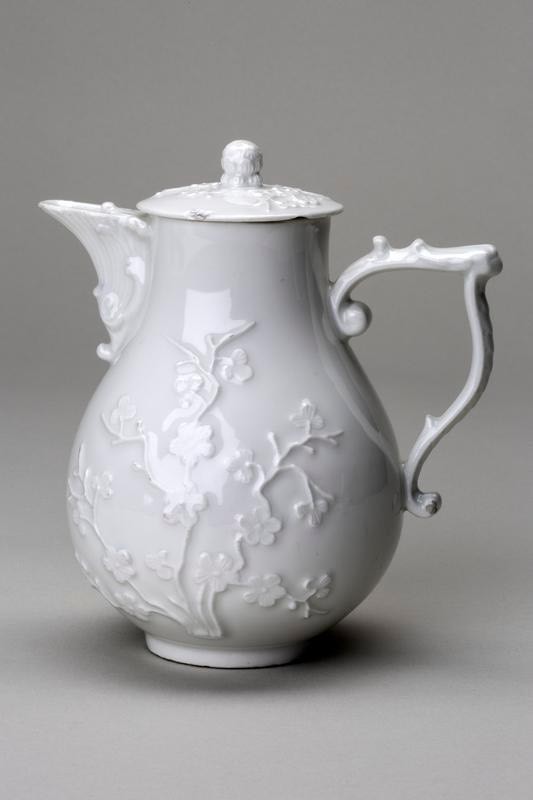
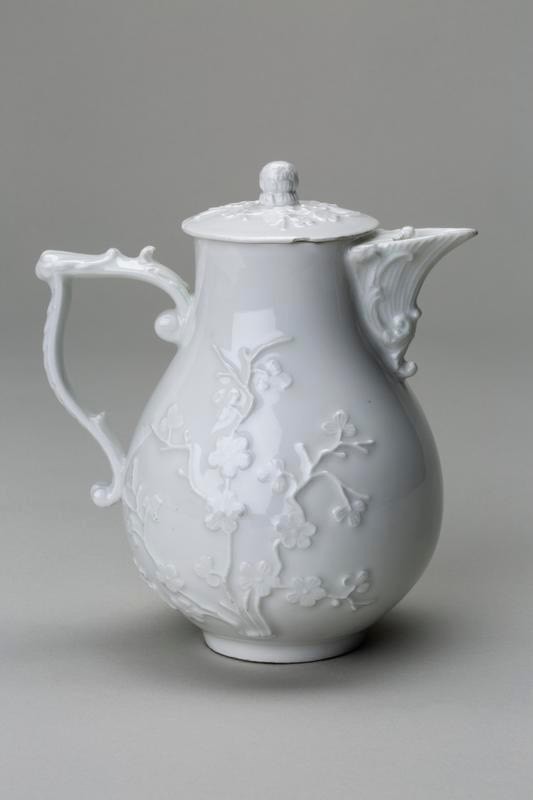
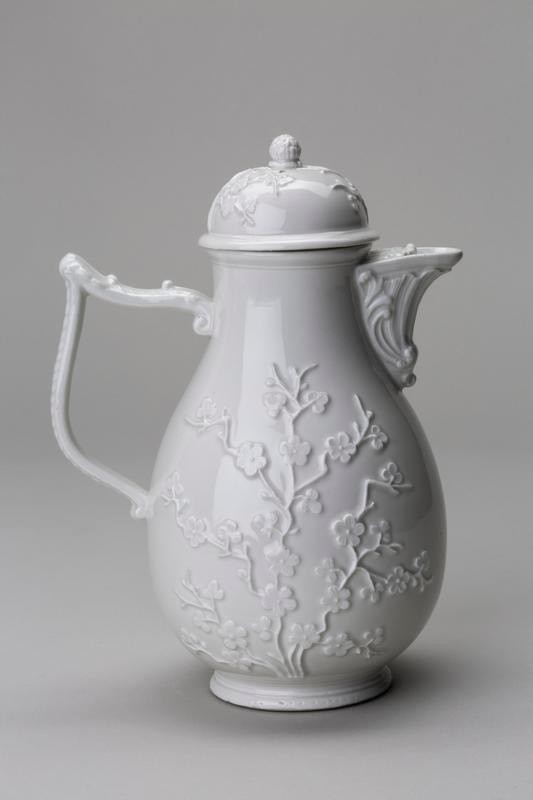
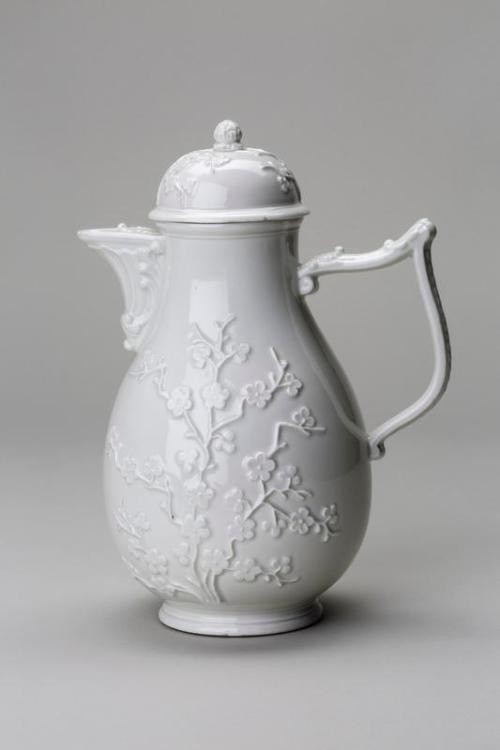
这还不够,一个折枝梅花纹糖罐,也是这家博物馆的藏品。都是1740年前后德国梅森生产的。
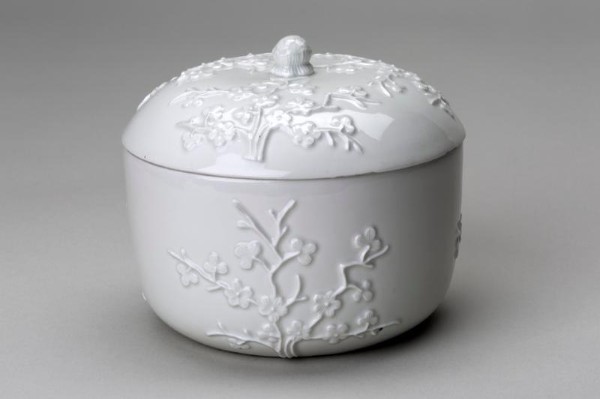
折枝梅花纹图桉,在明代便可见于德化瓷器上。而在明代万历时期,宜兴紫砂壶也将折枝梅花纹纳入紫砂壶装饰体系中。欧洲则迟至十七世纪末,荷兰才首先成功彷制宜兴紫砂壶,也同时复制了折枝梅花纹图桉。随后德国和英国等才陆续出现折枝梅花纹的种种变异,包括葡萄藤曼纹和樱花枝纹等。此时的折枝梅花纹,只在折枝的概念下转化为欧洲审美风格。
| 